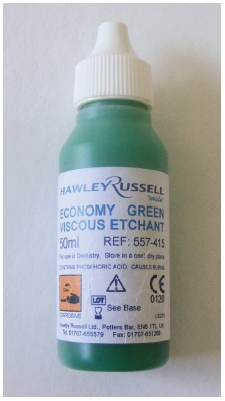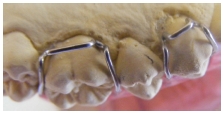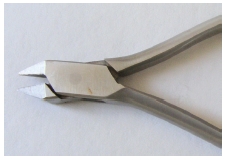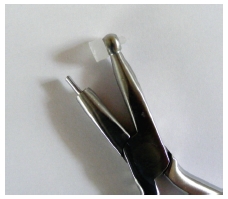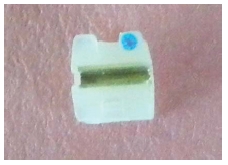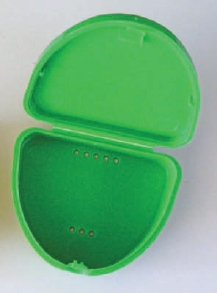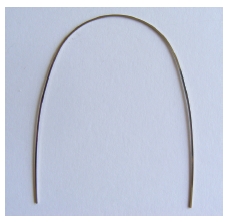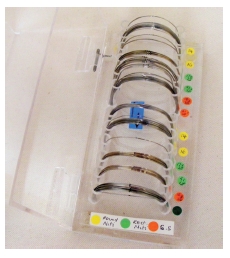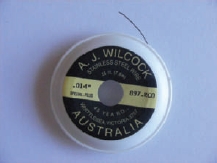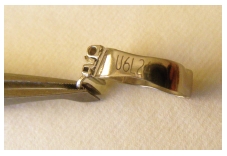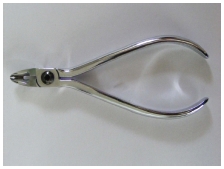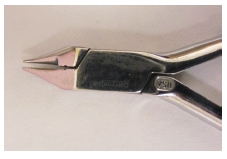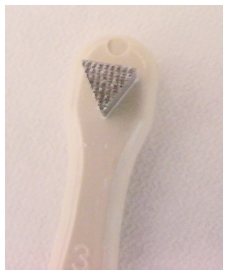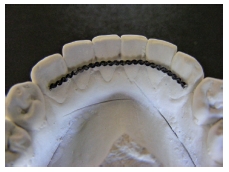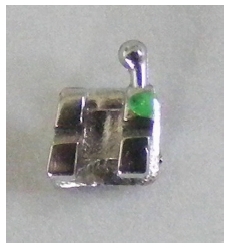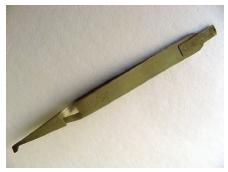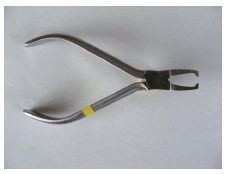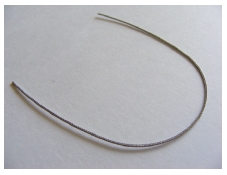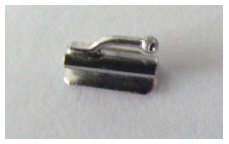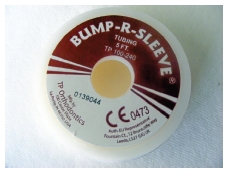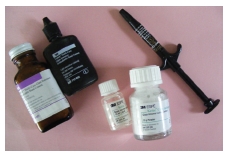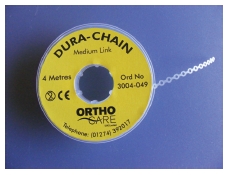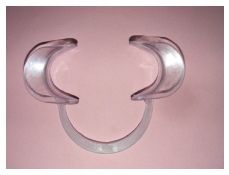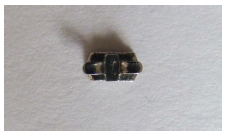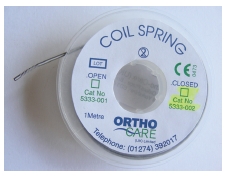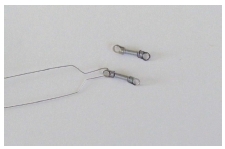Chapter 24
Descriptions and photographs of most commonly used instruments and auxiliaries
Acid etch
Chemical gel used before primer to prepare tooth surface prior to bonding an attachment (Figure 24.1)
Adams clasp (crib)
Clasp (sometimes called a Crib) used on removable appliances for retention (Figure 24.2)
Adams pliers
Plier used to adjust wire components on removable appliance (Figure 24.3)
Adhesive and Primer
Material that bonds brackets, tubes, etc. to teeth (Figure 24.4)
Adhesive-removing pliers
Plier with a blade that removes adhesive from tooth after debonding (Figure 24.5)
Aesthetic bracket
Less visible, non-metal bracket (Figure 24.6)
Appliance box
Box to keep removable appliance safe when out of the mouth, e.g. sport (Figure 24.7)
Arch wire
Formed wire used in fixed appliances (Figure 24.8)
Arch wire stand
Convenient holder for many different sizes of arch wire (Figure 24.9)
Australian wire
Type of spooled steel wire (Figure 24.10)
Band
Metal ring cemented around molar tooth (Figure 24.11)
Band-slitter pliers
For cutting bands to release them from tooth (Figure 24.12)
Bird-beak pliers
Multi-use with fixed appliances, popular, strong, has a round and a square beak (Figure 24.13)
Bite stick
Nylon. Patient bites on this to fully seat metal band. Has triangular bite pad, which may be soft metal, autoclavable (Figure 24.14)
Bonded retainer
Wire or metal bar cemented to the lingual side of teeth as a fixed retainer (Figure 24.15)
Bracket
A metal or ceramic attachment bonded to the teeth in fixed appliances through which the arch wire is slotted (Figure 24.16)
Bracket-holding tweezers
For use with direct bonding. Holds individual bracket, when placing onto tooth. Press handles together to open beak to release bracket (Figure 24.17)
Bracket-removing pliers
For use on steel, plastic and ceramic brackets (Figure 24.18)
Braided wire
Wire made up of several strands braided together (Figure 24.19)
Buccal tube
Tube, can be bonded to the cheek surface of tooth or may be welded to a band. Tube can be of round or rectangular section into which the arch wire fits (Figure 24.20)
Bump-r-sleeve
Clear sleeving, fits over arch wire to prevent wire cutting into soft tissues (Figure 24.21)
Cement
Lining material inside the band when fitted on a tooth, eliminates space between band and enamel (Figure 24.22)
Chain
Line of joined elastic links, available in various sizes, can be clear or coloured (Figure 24.23)
Cheek retractor
Plastic frame, keeps lips and cheeks away from teeth and gives better vision, access and moisture control (Figure 24.24)
Cleat
Metal attachment that can be welded to bands or bonded to teeth (Figure 24.25)
Coil (open and closed)
Sold on spools, to either open or maintain a space (Figure 24.26)
Coil springs (NiTi)
Fits over fixed appliance attachment and used to close spaces, particularly of extraction sites (Figure 24.27)
Coon’s ligature-tying pliers
Plier for tying metal ligatures (Figure 24.28)
Stay updated, free dental videos. Join our Telegram channel

VIDEdental - Online dental courses


